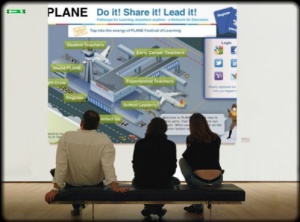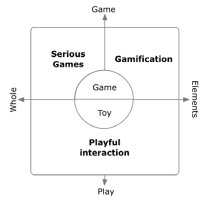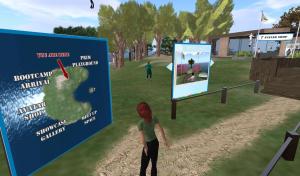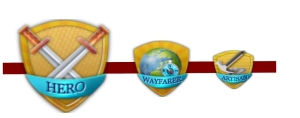Making some distinctions
This is the first in a series of posts to relaunch this blog on a new footing more focussed on the exciting space created by the marriage of community, learning and gameplay. These five posts stem from the work I have done in designing a game layer for the PLANE professional community and the questions that arose out that experience and its early evaluation.
It is important here to take a clear position on the definition of the key terms gamification and community of practice. In my book wherever possible short and practical is the best and most accessible definition.
Community of Practice
“A community of practice specifically centres its interest on the practices of the workplace. But communities of practice are not just celebrations of common interests. They focus on practical aspects of a practice, everyday problems, new tools, developments in the field, things that work and don’t. (McDermott, 1999, p. 2) For something to be a community of practice you have to be able to identify the practice that draws the community together. In PLANE the practice is teaching and learning with information and communication technologies (ICTs). From its earliest conception PLANE’s has been designed as an open source community driven space
Gamification
Deterding et al define gamification as “the use of game design elements in non-game contexts.” That does not suggest making the whole context/project into a game but applying well chosen mechanics of games to further the goals of in this case the learning environment. We need to step back a little and remind ourselves what gamification is and what it is not. It is not game design but it draws from the theories and lessons learned in game design. And if done well it is so much more than a repetitive collection of points or trinkets for clicks. In the context of professional learning it needs to draw from many other bodies of knowledge such as motivational theory, systems thinking, professional development, communities of practice and attendant concepts of professional reputation and identity.
The way Deterding and colleagues distinguish the three hot agendas of serious games, gamification, and playful interaction is very useful. The PLANE community activity involves all three of these and the distinctions might be best explained by unpacking the design and activities involved in each.
Firstly, Leornian is a serious game, a complete game designed in Unity 3D for teachers to play in order to learn the key principles surrounding the concept of “hard fun”. It was designed to be a single player immersive game experience.
Secondly, the PLANE virtual world, built in OpenSim has several incremental and live bootcamp events with fun activities designed for groups of teachers to explore together how virtual worlds might be part of their teaching and learning. These activities could be described as as playful interactions. Playful being used to describe a quality of the interactions but even when viewed collectively the activity in the virtual world does not constitute a game.
Thirdly, the Hero’s Journey in PLANE is a ‘game layer’ as we have chosen to call it, is not a game. It involves interactions yes, not centred around play but around professional learning community activity. Community members engage in these professional learning activities and begin to see progress as they receive rewards and advancement in the community’s bespoke game layer. They earn points, complete missions and level up through the game mechanics that have been drawn upon to build this layer. In McGonigal terms this could be described as “gameful interaction”. They are gameful they are not necessarily playful.
On the surface it may seem like semantics but these are very important distinctions to make as we consider the role of gamification in professional learning.The next 5 posts will explain how gamification or gameful design was employed in the PLANE community of practice and surface some of the key issues surrounding its implementation. This third relationship to game, ie gamification is what I want to take up in much more detail over the subsequent posts. I find, and I hope you will too, that this is really juicy stuff
Resources to further unpack the design of the PLANE Game Layer:
- Unpacking the PLANE Game Layer Dr Bronwyn Stuckey, February 2013
- Recognizing The Hero’s Journey: Gamification Of Teacher Professional Learning,
on Youtube Dr Bronwyn Stuckey: Nov, 2012 - SlideShare presentation for Recognizing The Hero’s Journey: Gamification Of Teacher Professional Learning Dr Bronwyn Stuckey: Nov, 2012
- Festival of Learning Opening Keynote on Youtube Dr Bronwyn Stuckey – Oct, 2012
References
Deterding et al (2011) Gamification: Toward a Definition CHI 2011, May 7–12, 2011, Vancouver, BC, Canada. ACM 978-1-4503-0268-5/11/05.
McDermott, R. (1999). Nurturing three dimensional communities of practice: How to get the most out of human networks. Knowledge Management Review, Fall.
McGonigal, J. (2011) We don’t need no stinkin’ badges: How to re-invent reality without gamification. Presentation at GDC 2011. http://goo.gl/9a6ka.






